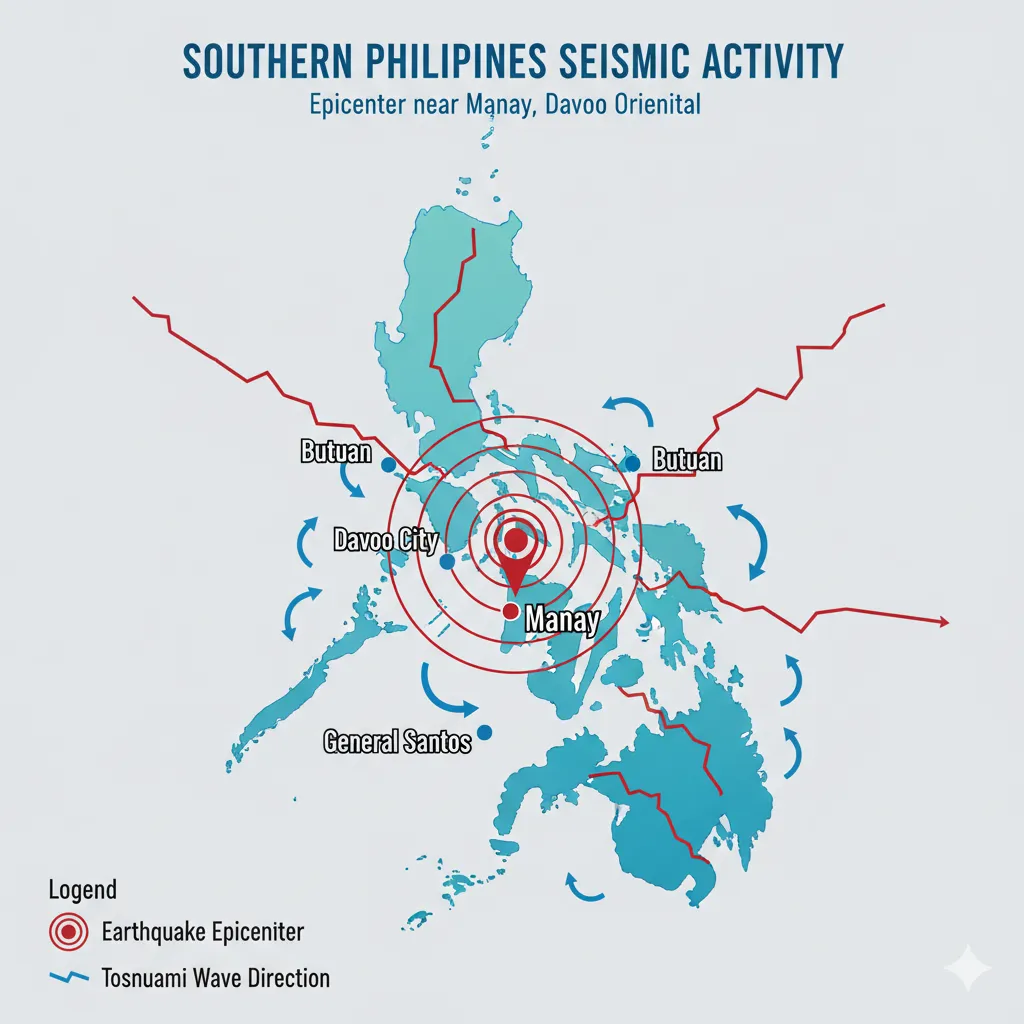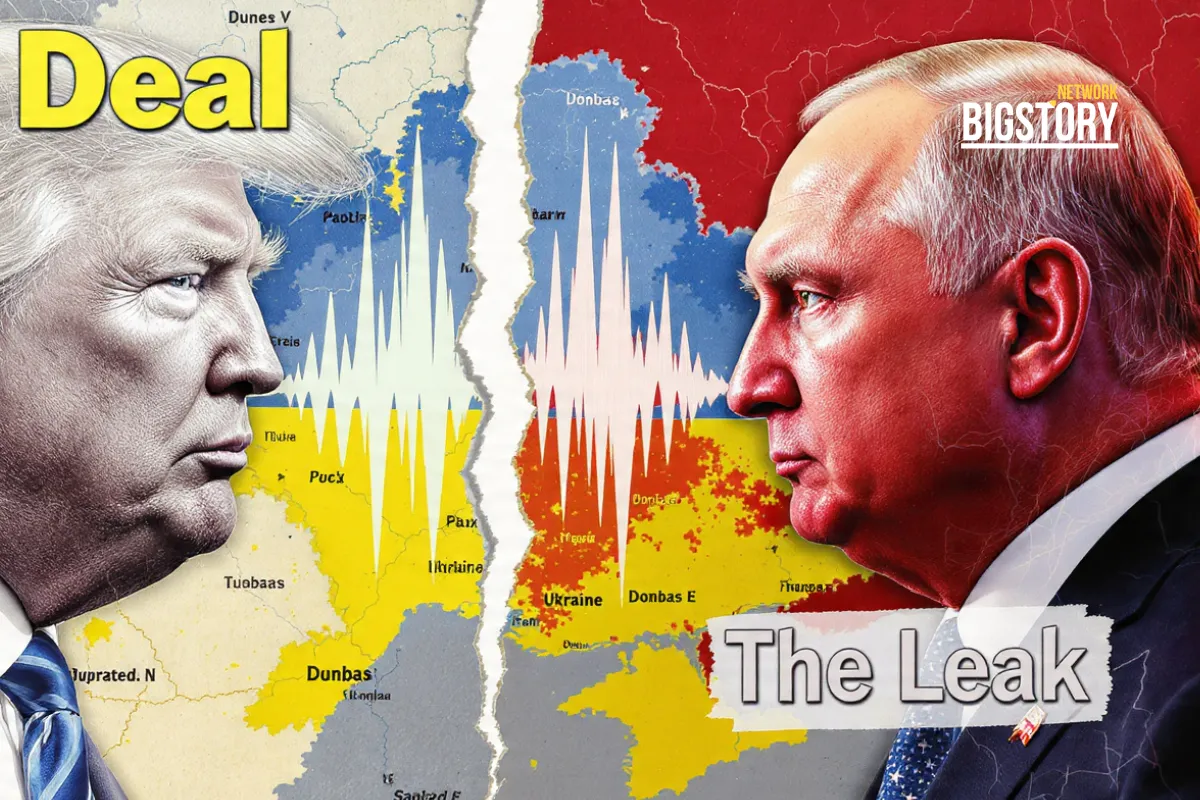A powerful 7.4-magnitude earthquake hit southern Philippines on October 10, 2025, shaking Mindanao, triggering tsunami warnings, and causing power outages and evacuations across Davao Oriental.
 Sseema Giill
Sseema Giill

Manila, October 10, 2025 — A powerful earthquake measuring 7.4 in magnitude struck the southern Philippines on Friday morning, shaking buildings, cutting power, and triggering widespread evacuations across coastal areas of Mindanao. The tremor, which originated near the coastal town of Manay in Davao Oriental, prompted tsunami warnings across the region before being lifted later in the day.
According to the Philippine Institute of Volcanology and Seismology (Phivolcs), the quake occurred at 9:43 a.m. local time at a depth of around 20 kilometers. It was initially reported as magnitude 7.5–7.6 before being revised to 7.4 following further analysis.
Tremors were felt across large parts of Mindanao, including Davao City, General Santos, and several provinces in the Visayas region. Residents rushed outdoors as buildings swayed and alarms sounded.
Authorities confirmed at least one fatality and multiple injuries linked to falling debris and collapsed structures. Power outages were reported in several municipalities of Davao Oriental and nearby provinces, while some roads were temporarily closed due to landslides and debris.
Davao Oriental Governor Edwin Jubahib said that local emergency teams were deployed immediately to assess the damage. “Some buildings were reported to have sustained cracks and damage. It was intense,” he told reporters.
Hospital staff in Davao City temporarily evacuated patients as a precaution, treating several people outdoors following aftershocks.
President Ferdinand Marcos Jr. ordered immediate evacuations in coastal areas and instructed disaster agencies to ensure rapid relief efforts.
“We are working tirelessly to ensure assistance reaches all those in need,” the president said in an official statement.
The National Disaster Risk Reduction and Management Council (NDRRMC), along with the Office of Civil Defense and Armed Forces of the Philippines, has mobilized teams for rescue, damage assessment, and relief distribution.
Phivolcs initially issued a tsunami warning urging residents near coastal communities to move to higher ground. Only small waves were later observed, and the advisory was lifted within hours. The agency continues to warn of aftershocks and possible structural instability in affected areas.
The tremor also prompted temporary tsunami alerts in neighboring Indonesia and Palau, highlighting the region’s vulnerability to seismic activity. No significant wave activity was recorded outside the Philippines, and international aid agencies remain on standby.
The event underscores the cross-border coordination mechanisms in place across the western Pacific, where nations regularly share seismic data and tsunami warnings.
The Philippines is part of the Pacific “Ring of Fire”, a vast area known for frequent earthquakes and volcanic eruptions caused by the shifting of several tectonic plates.
Friday’s earthquake comes just over a week after a deadly 6.9-magnitude tremor struck Cebu, killing dozens and displacing thousands. Experts warn that recent seismic clusters may indicate heightened tectonic stress in the region, calling for stricter building safety measures and preparedness programs.
Local governments across Mindanao have suspended classes and government work as inspections continue. Businesses and transport systems are slowly resuming operations amid ongoing power restoration.
As aftershocks continue to rattle the region, disaster officials urge residents to remain vigilant, avoid damaged buildings, and follow official advisories.
Survivor Richie Diuyen from Davao Oriental described the experience: “I am still frightened and shaken... This was my first experience of such magnitude.”
For now, rescue and recovery teams remain focused on restoring safety and stability to communities affected by one of the strongest earthquakes to hit the southern Philippines in recent years.
The October 10, 2025 earthquake was triggered by tectonic movement along the Philippine Trench, where the Philippine Sea Plate subducts beneath the Sunda Plate. This region, part of the Pacific Ring of Fire, is one of the most seismically active zones in the world.
The epicenter was located near Manay town in Davao Oriental province, Mindanao, at an estimated depth of 20 kilometers beneath the earth’s surface.
A tsunami warning was issued shortly after the quake, prompting coastal evacuations across Mindanao. Only minor sea-level changes were recorded, and the warning was lifted after a few hours.
Authorities reported building damage, power outages, and road blockages in parts of Davao Oriental and nearby provinces. One fatality and multiple injuries were confirmed, while inspections continue for structural safety.
President Ferdinand Marcos Jr. ordered immediate evacuations and relief operations. The National Disaster Risk Reduction and Management Council (NDRRMC), Phivolcs, and the Armed Forces of the Philippines are conducting rescue, relief, and assessment missions.
Residents are advised to:
The country sits on the Pacific Ring of Fire, where several tectonic plates converge, leading to frequent earthquakes and volcanic activity. This geological setup makes the Philippines one of the most earthquake-prone nations globally.
This 7.4-magnitude quake comes just a week after a 6.9-magnitude earthquake in Cebu, which caused dozens of deaths. Both events highlight increasing seismic activity across the central and southern Philippines in recent months.






Sign up for the Daily newsletter to get your biggest stories, handpicked for you each day.
 Trending Now! in last 24hrs
Trending Now! in last 24hrs



